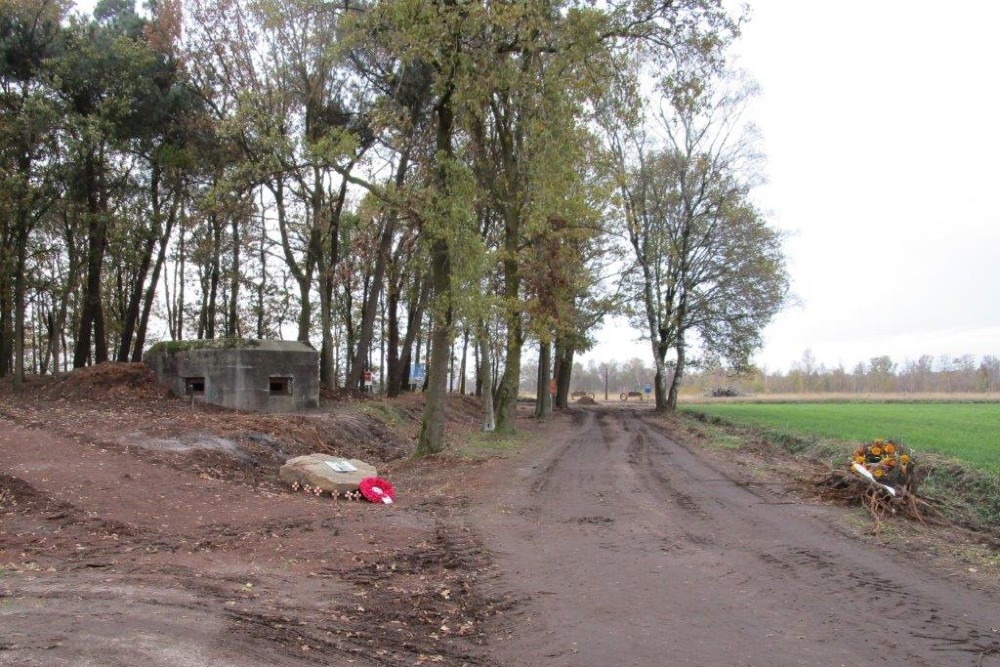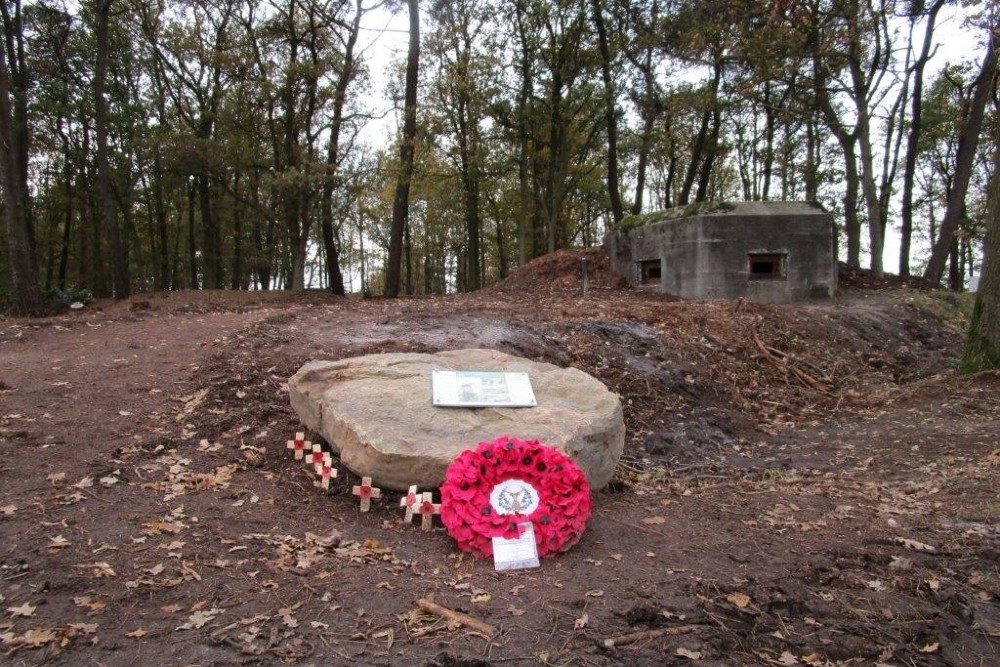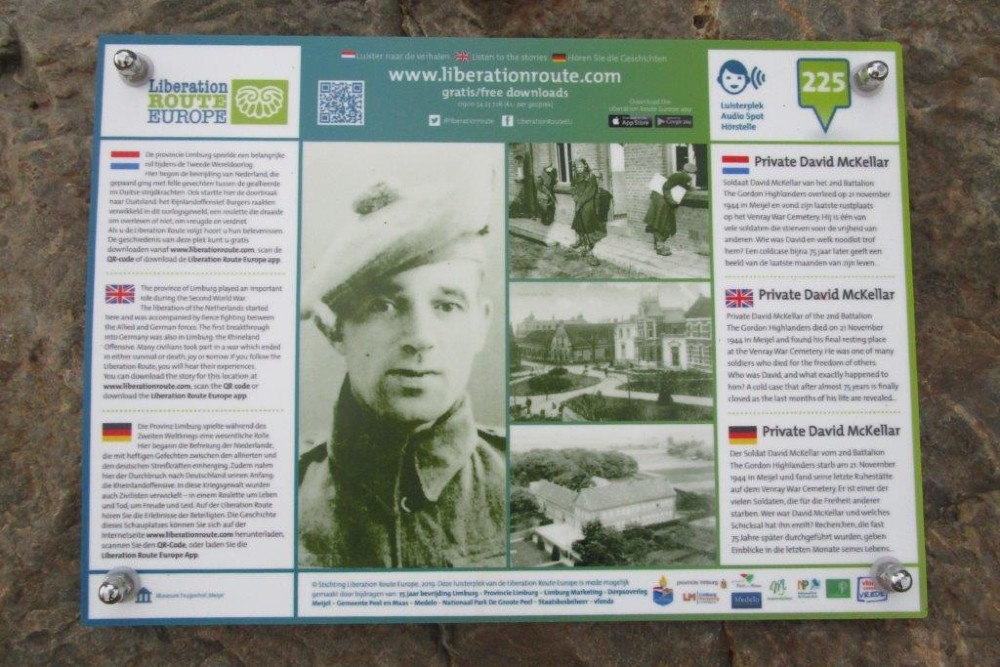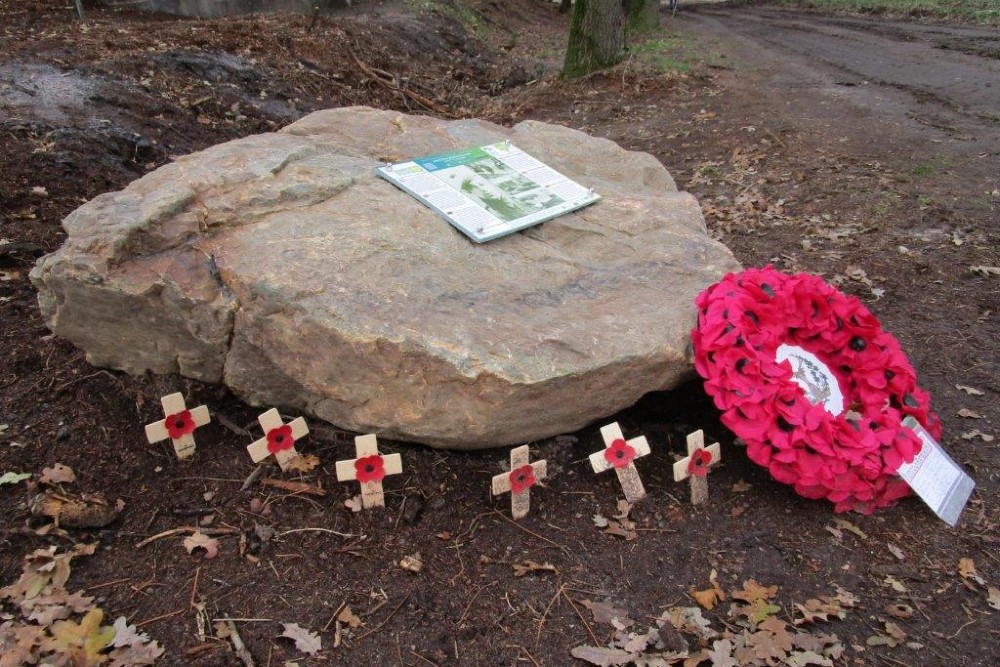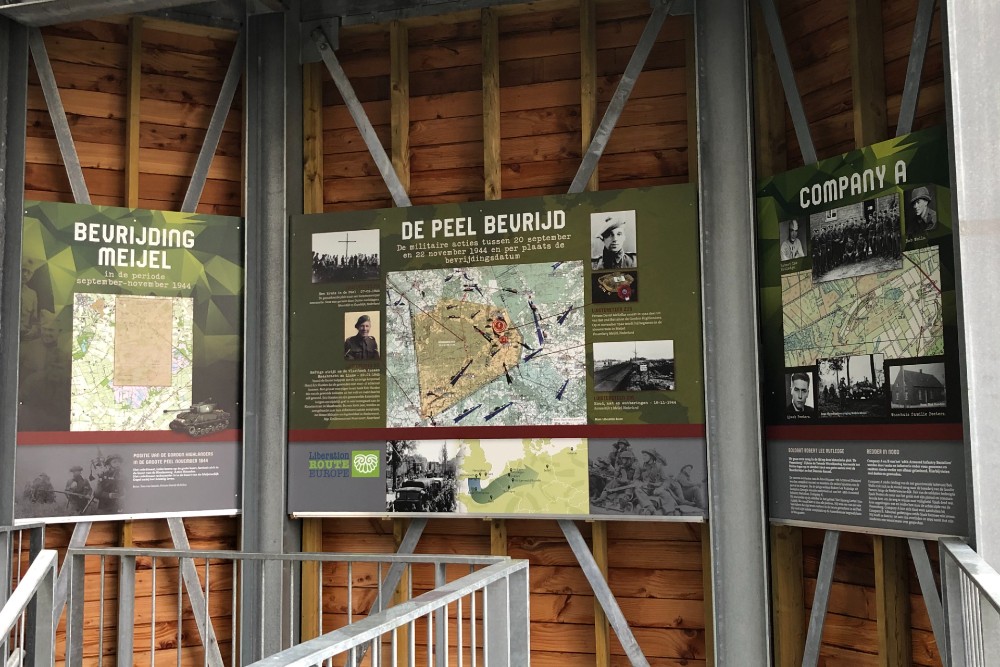Liberation Route Marker 225: Private David McKellar
Private David McKellar
Private David McKellar is one of the many allied soldiers who died an unknown and inglorious death for our freedom. Thanks to thorough research we can now follow the route of his battalion, the 2nd Battalion The Gordon Highlanders. The route leads from England via France and Belgium to the Netherlands where David found his final resting place.
Private David McKellar is one of the many allied soldiers who died an unknown and inglorious death for our freedom. Thanks to thorough research we can now follow the route of his battalion, the 2nd Battalion The Gordon Highlanders. The route leads from England via France and Belgium to the Netherlands where David found his final resting place.
In 1944, private David McKellar is part of the 2nd Battalion The Gordon Highlanders. Before the battalion moves to the south of England in preparation for D-Day, McKellar sends a postcard depicting Hoddom Castle in Annan, Scotland, to his wife. Many postcards follow, from many countries. Not once does he mention the violence of the war or the losses that are suffered.
In the early hours of 6 June 1944, the battalion exercises at Findon, in the south of England. In the clear moonlight, they see a fleet of hundreds of planes fly overhead, on course for the French coast. The invasion has begun. The battalion is still weeks away from reaching Normandy. On 26 June, at the First Battle of the Odon, the battalion experiences the war from up close for the first time. After the fighting ends on 1 July, the numbers are tallied. 49 Gordon Highlanders were killed, 182 were wounded, and another 33 men are missing. In the weeks that follow, the battalion advances further in the northwest of France. Here, too, there is fierce fighting with the Germans. On 25 August 1944 Paris is liberated and when the Gordon Highlanders attempt to cross the Seine west of the city, they are attacked by the Germans. The Allied losses are enormous, but the remaining soldiers do not give up and move towards Belgium where they arrive on 8 September. David McKellar sends his wife a postcard. On the back, he writes ‘A souvenir from Belgium. To my own darling wife. I love you’. Multiple postcard follow from Eindhoven, Deurne, Helmond and Tilburg, among others. In November 1944 he sends his last card from Asten.
In this period General Montgomery is determined to chase away all German troops from De Peel. Under the name Operation Nutcracker, several Allied troops depart from Asten via Meijel, Beringe and Achterste Steeg in the direction of Sevenum. The area is riddled with mines and booby traps, and the Allies are attacked multiple times. On 14 November 1944, the battalion's war diary mentions a coordinate about 100 meters north of the Vossenberg in Meijel.
McKellar does not survive Operation Nutcracker. On 21 November 1944, he is buried in the monastery garden in Meijel. We will never know what exactly happened to him. Was he hit by German fire or fatally injured while disarming mines? We do not know. McKellar gave his life for our freedom. He lost his life in De Peel, and his sacrifice symbolises the many allied soldiers who gave their lives to free our country. David McKellar's grave was transferred to the war cemetery in Venray in 1946, his final resting place.
Audiospot - Private David McKellar
Liberation Route Europe is a certified Cultural Route of the Council of Europe. With hundreds of sites and stories in nine European countries, the route links the main regions along the advance of the Allied Forces in 1943-1945.
The entire route consists of themed routes that can be travelled by by hiking, walking, cycling and car. These routes pass numerous historical and interesting sites and tell stories from a multitude of perspectives that were important in the final phase of World War II.
Many routes feature listening spots, offering the opportunity to listen to a historical story at a location. In addition, many ‘Vectors of Memory’ have been placed, indicating that the passer-by is on one of the Liberation Routes.
The routes can be found on the Liberation Route Europe website or in the app through which many stories can also be listened to.
Do you have more information about this location? Inform us!
Source
- Text: TracesOfWar & Liberation Route Europe
- Photos: Arie van Wijngaarden (1, 2, 3, 4), Mart Janssen (5)
Nearby
Museum
Point of interest
- Watch Tower Fortification Vossenberg - Meijel
- Cycling route Death Valley De Peel - Toothless resilient (Eeuwig Leven) (#23) - Asten
- Cycling route Death Valley De Peel - Peel-Raamstelling (De Vossenberg) (#17) - Meijel
Monument
Cemetery
- Dutch War Graves Roman Catholic Cemetery Helenaveen - Helenaveen
- Dutch War Graves Grashoek - Grashoek
- Dutch War Grave R.C. Cemetery Liessel - Liessel
Remembrance Stone
- Stolperstein Leveroyseweg 1 - Heythuysen
- Stumbling Stone Kloosterstraat 5 - Heythuysen
- Stumbling Stones Dorpsstraat 77 - Heythuysen
Fortification
- Peel-Raamstelling - S-Casemate nr. 2 - Meijel
- Peel-Raamstelling - G-Casemate nr. 3 - Meijel
- Peel-Raamstelling - B-Casemate nr.10 - Meijel
